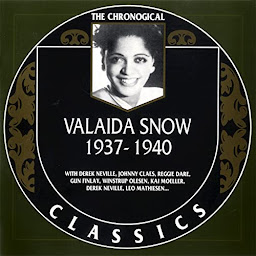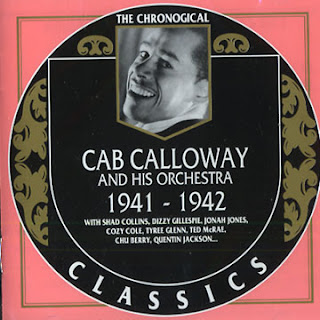Valaida Snow - 1937-1940
I have to admit it’s difficult writing and even thinking about jazz history during a pandemic. Not only that, recent attacks by the police on African Americans have persisted with the killings of George Floyd in Minneapolis, Breonna Taylor in Louisville, and Rayshard Brooks in Atlanta and resulted in protests everywhere in the country (even in my little town). They have resulted in widespread looting and destruction of property, but also in the taking down of Confederate statues and other symbols of white supremacy. Aunt Jemima and Uncle Ben’s will be rebranded to distance themselves from their racist origins. It’s dispicable that a restaurant named “Sambo” is still in existence in 2020, but they will finally rename themselves. All of these changes and others have come swiftly and undeniably how history is taught will be re-evaluated.
However, being an African American artform that began during the segregation era, race has been explored in jazz. Possibly the biggest gaffe that jazz history has done is to ignore the male chauvinistic attitude that has dominated the music until very recently. Even when female jazz musicians began to become more prominent in the 2000s, it persisted. The #MeToo movement finally made an impact and since then the jazz community has made a bona fide effort to change that and to be more encouraging towards female jazz musicians.
However, the movement had already quietly started prior to this with trumpeter/vocalist Valaida Snow. I wasn’t aware of her until I began teaching jazz history in 2015, and she appears in the text I was using by Giddins/DeVeaux. I only knew the one track by her and so when I saw this disc, I saw an opportunity to expand my knowledge of her.
Valaida Snow was born in Tennessee in 1900 to mixed-race parents who were entertainers (Wiki says 1904, the liner notes to my CD say 1905, but Grove says 1900 so I’ll go with that). She learned a number of instruments before settling on trumpet and singing. Her career in show business began with the TOBA circuit or vaudeville. Judging from these recordings, she came from more of the entertainer side rather than the blues side as epitomized by Bessie Smith. She travelled extensively throughout her career, visiting Shanghai in 1926 and going to Europe in 1934 following her successful appearance in the show Blackbirds. She spent most of the next nine years in Europe, including being incarcerated at a Nazi concentration camp in Denmark in 1940. Though she continued to perform following her release in 1943, she never regained her former stature.
Snow was an entertainer first, but her musicianship skills are clearly evident. She was one of the few female jazz musicians whose instrumental skills were as strong as her singing. Known as “Little Louis Armstrong”, his influence is all over her trumpet playing and singing. She takes gutsy, spirited solos that are blues-drenched with bends, growls, etc. Her instrumental conception is vocal so, like Armstrong, there are many parallels between her trumpet playing and her singing. I haven’t read Mark Miller’s biography on Snow, but I can imagine she went through a lot of nasty for being a strong instrumentalist and female. She was a star in Europe and able to record there, and perhaps as an expat it was easier to be accepted for who she was.
This compilation includes twelve tracks recorded in London, England in 1937, four recorded in Sweden in 1939 and the last four in Denmark in 1940. Most numbers are mid-tempo that are either peppy or mellow. There are also a couple of uptempo pieces (“I got rhythm” and “Tiger Rag”), a mellow version of Duke Ellington’s “Caravan” with a New Orleans-style beat, and the two ballads, “Chloe” and “Swing Low Sweet Chariot”. Overall, Snow is consistently terrific throughout. In addition to playing trumpet and singing, she scats, inspires the band, and one can imagine her dancing during others’ solos. Overall, the arrangements, especially the British tracks, are such that everyone gets at least a brief solo spot. I am sadly ignorant of too many non-American jazz musicians, so I couldn’t tell you anything about any of the musicians except that they are excellent. Something I hope to rectify.
Not sure if it’s the countries or the years or what, but the tracks from Sweden and Denmark seem to have a stronger stamp of the Swing Era than the ones from England. I always associate the sound of that music as being sweet and sentimental and I can hear it in all of the tracks. Maybe having a clarinet player helps, but the influence of American jazz musicians like Earl Hines and others is all over these tracks. “You’re Driving Me Crazy” from the August 28, 1939 session in Stockholm, Sweden is the track from the DeVeaux/Giddins book.
Many stars from the 1920s seemed to have had their careers sidelined due to the depression. Snow was never a star, but was able to find success in Europe and we are fortunate today to have her music.
From a historical point of view, Chronological Classics compilations are simply amazing. Listening to artists’ recorded output in order that they were recorded really puts everything in perspective, however it’s not always possible to have all of that music in front of you to listen to. I’m not familiar with Snow’s earlier material so perhaps I’m missing a few things here, but still this collection provides a good snapshot of a neglected but successful female jazz trumpeter/vocalist/bandleader.
However, being an African American artform that began during the segregation era, race has been explored in jazz. Possibly the biggest gaffe that jazz history has done is to ignore the male chauvinistic attitude that has dominated the music until very recently. Even when female jazz musicians began to become more prominent in the 2000s, it persisted. The #MeToo movement finally made an impact and since then the jazz community has made a bona fide effort to change that and to be more encouraging towards female jazz musicians.
However, the movement had already quietly started prior to this with trumpeter/vocalist Valaida Snow. I wasn’t aware of her until I began teaching jazz history in 2015, and she appears in the text I was using by Giddins/DeVeaux. I only knew the one track by her and so when I saw this disc, I saw an opportunity to expand my knowledge of her.
Valaida Snow was born in Tennessee in 1900 to mixed-race parents who were entertainers (Wiki says 1904, the liner notes to my CD say 1905, but Grove says 1900 so I’ll go with that). She learned a number of instruments before settling on trumpet and singing. Her career in show business began with the TOBA circuit or vaudeville. Judging from these recordings, she came from more of the entertainer side rather than the blues side as epitomized by Bessie Smith. She travelled extensively throughout her career, visiting Shanghai in 1926 and going to Europe in 1934 following her successful appearance in the show Blackbirds. She spent most of the next nine years in Europe, including being incarcerated at a Nazi concentration camp in Denmark in 1940. Though she continued to perform following her release in 1943, she never regained her former stature.
Snow was an entertainer first, but her musicianship skills are clearly evident. She was one of the few female jazz musicians whose instrumental skills were as strong as her singing. Known as “Little Louis Armstrong”, his influence is all over her trumpet playing and singing. She takes gutsy, spirited solos that are blues-drenched with bends, growls, etc. Her instrumental conception is vocal so, like Armstrong, there are many parallels between her trumpet playing and her singing. I haven’t read Mark Miller’s biography on Snow, but I can imagine she went through a lot of nasty for being a strong instrumentalist and female. She was a star in Europe and able to record there, and perhaps as an expat it was easier to be accepted for who she was.
This compilation includes twelve tracks recorded in London, England in 1937, four recorded in Sweden in 1939 and the last four in Denmark in 1940. Most numbers are mid-tempo that are either peppy or mellow. There are also a couple of uptempo pieces (“I got rhythm” and “Tiger Rag”), a mellow version of Duke Ellington’s “Caravan” with a New Orleans-style beat, and the two ballads, “Chloe” and “Swing Low Sweet Chariot”. Overall, Snow is consistently terrific throughout. In addition to playing trumpet and singing, she scats, inspires the band, and one can imagine her dancing during others’ solos. Overall, the arrangements, especially the British tracks, are such that everyone gets at least a brief solo spot. I am sadly ignorant of too many non-American jazz musicians, so I couldn’t tell you anything about any of the musicians except that they are excellent. Something I hope to rectify.
Not sure if it’s the countries or the years or what, but the tracks from Sweden and Denmark seem to have a stronger stamp of the Swing Era than the ones from England. I always associate the sound of that music as being sweet and sentimental and I can hear it in all of the tracks. Maybe having a clarinet player helps, but the influence of American jazz musicians like Earl Hines and others is all over these tracks. “You’re Driving Me Crazy” from the August 28, 1939 session in Stockholm, Sweden is the track from the DeVeaux/Giddins book.
Many stars from the 1920s seemed to have had their careers sidelined due to the depression. Snow was never a star, but was able to find success in Europe and we are fortunate today to have her music.






Comments
Post a Comment